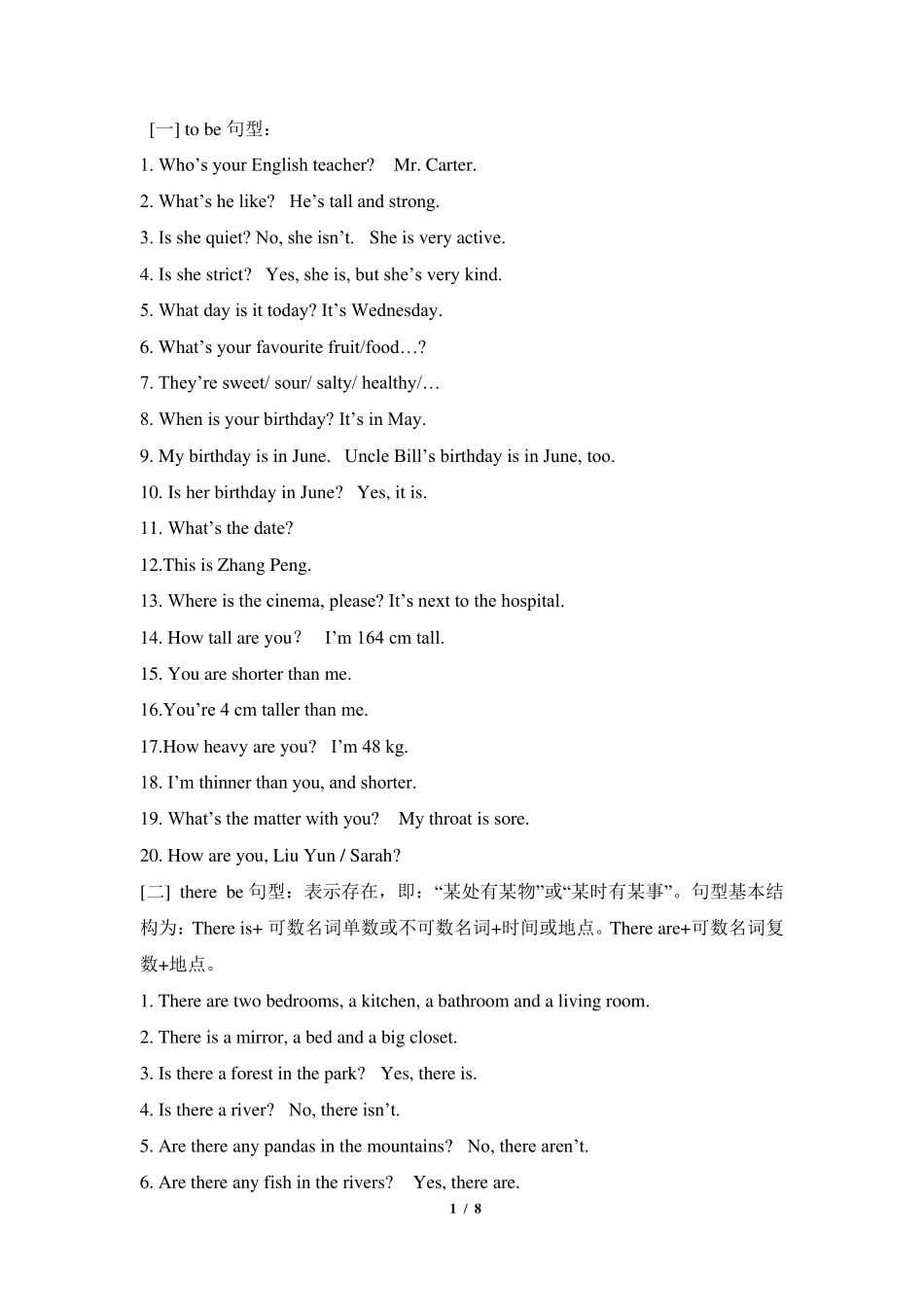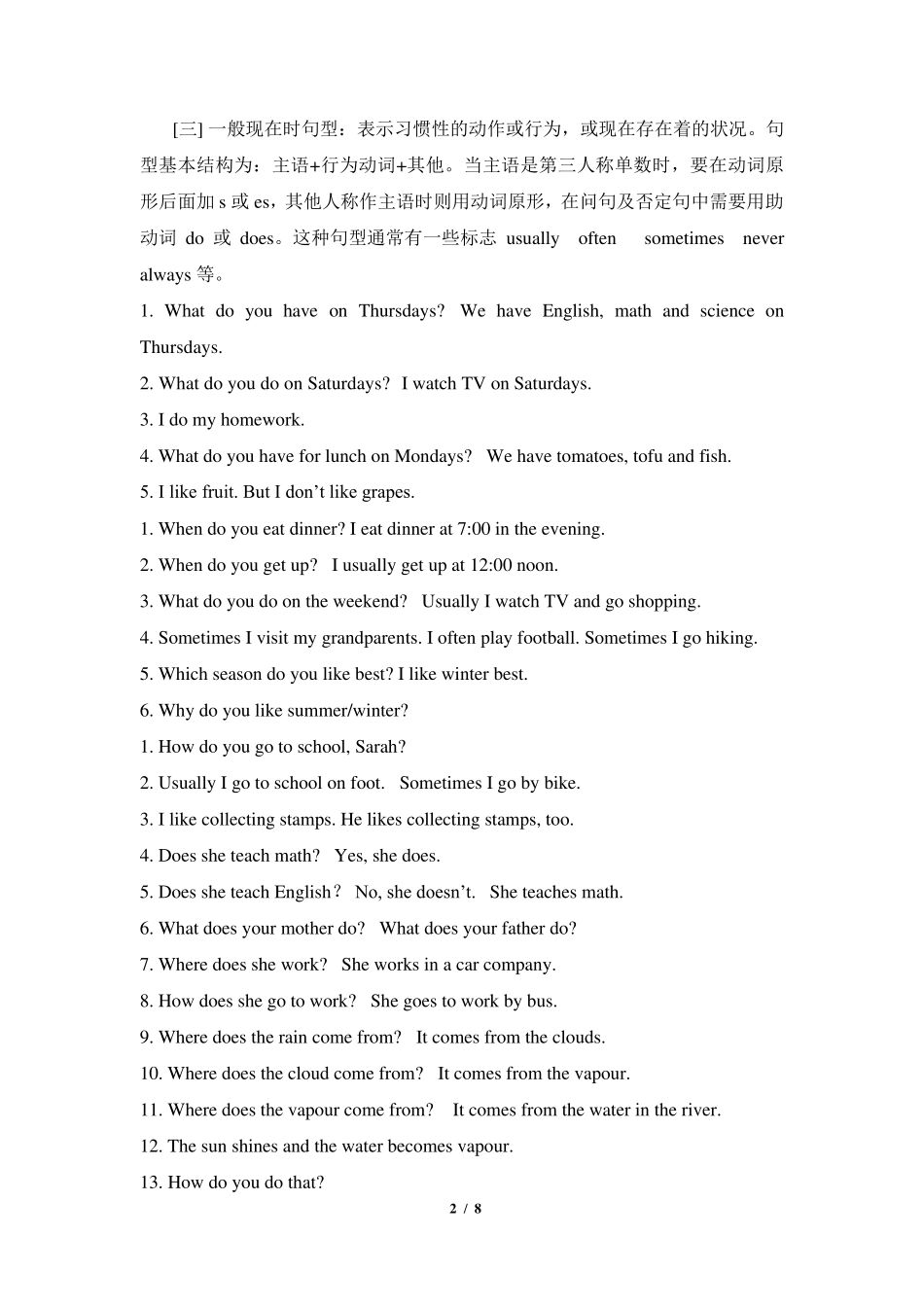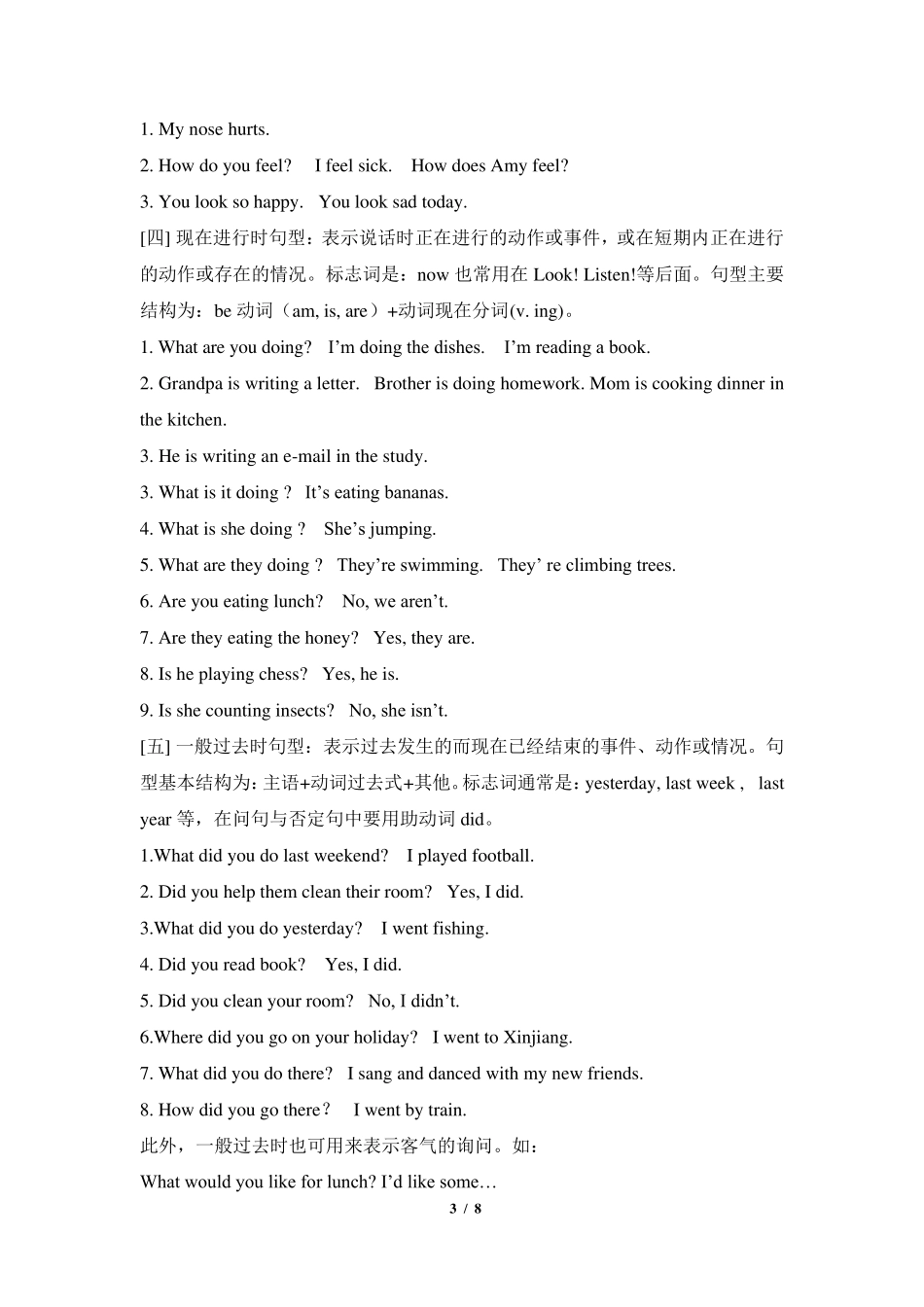1 / 8 [一] to be 句型: 1. Who’s your English teacher? Mr. Carter. 2. What’s he like? He’s tall and strong. 3. Is she quiet? No, she isn’t. She is very active. 4. Is she strict? Yes, she is, but she’s very kind. 5. What day is it today? It’s Wednesday. 6. What’s your favourite fruit/food…? 7. They’re sweet/ sour/ salty/ healthy/… 8. When is your birthday? It’s in May. 9. My birthday is in June. Uncle Bill’s birthday is in June, too. 10. Is her birthday in June? Yes, it is. 11. What’s the date? 12.This is Zhang Peng. 13. Where is the cinema, please? It’s next to the hospital. 14. How tall are you? I’m 164 cm tall. 15. You are shorter than me. 16.You’re 4 cm taller than me. 17.How heavy are you? I’m 48 kg. 18. I’m thinner than you, and shorter. 19. What’s the matter with you? My throat is sore. 20. How are you, Liu Yun / Sarah? [二] there be 句型:表示存在,即:“某处有某物”或“某时有某事”。句型基本结构为:There is+ 可数名词单数或不可数名词+时间或地点。There are+可数名词复数+地点。 1. There are two bedrooms, a kitchen, a bathroom and a living room. 2. There is a mirror, a bed and a big closet. 3. Is there a forest in the park? Yes, there is. 4. Is there a river? No, there isn’t. 5. Are there any pandas in the mountains? No, there aren’t. 6. Are there any fish in the rivers? Yes, there are. 2 / 8 [三] 一般现在时句型:表示习惯性的动作或行为,或现在存在着的状况。句型基本结构为:主语+行为动词+其他。当主语是第三人称单数时,要在动词原形后面加 s 或es,其他人称作主语时则用动词原形,在问句及否定句中需要用助动词 do 或does。这种句型通常有一些标志 usually often sometimes never always 等。 1. What do you have on Thursdays? We have English, math and science on Thursdays. 2. What do you do...


